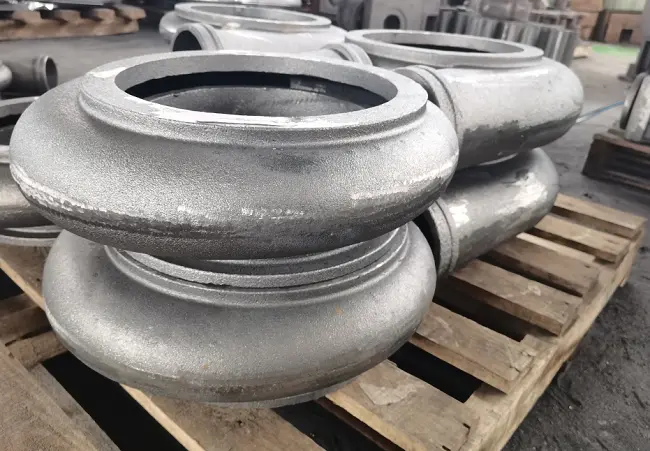
Knowledge
Introduction to Trace Elements in Ductile Iron ( Part Two)

Trace elements in ductile iron
During the manufacturing process of ductile iron, there are a series of trace elements that interfere with the spheroidization process. Although the mass fraction of these elements in ductile iron is only a few parts per ten thousand or a few parts per hundred thousand, they can significantly affect the spheroidization effect. This interference is closely related to the magnesium content in the melt and the cooling rate, and the effects of various interfering elements are superimposed.
Common interfering elements include Sb, Sn, Bi, Te, Pb, Ti, Se and As, etc. These elements can be classified according to their consumption characteristics of magnesium: Te and Se belong to magnesium-consuming type, which are prone to combine with magnesium and promote the formation of vermicular graphite, undercooled graphite and flake graphite; Sb, Sn, As and Ti belong to grain boundary segregation type, which tend to form distorted graphite at the grain boundaries; while Pb and Bi belong to the mixed type, forming distorted graphite at low content and promoting the formation of undercooled graphite and flake graphite at high content.
To suppress the anti-spheroidizing effect of these trace interfering elements or to broaden their allowable range, rare earth elements can be added to ductile iron. The addition amount of rare earth elements should be adjusted according to the purity of the molten iron, and it is usually appropriate for the residual cerium mass fraction to reach 0.03%.
It is particularly worth mentioning the lead element. When the iron liquid contains lead and the mass fraction is between 0.01% and 0.05%, in order to achieve a spheroidization rate of over 85%, the mass fraction of residual magnesium must exceed 0.6%, and the mass fraction of residual cerium also needs to reach above 0.05%.
Next, we will delve into the outstanding one among these trace elements.
Bismuth
Element type: Metal element
Element symbol: Bi
Atomic number: 83
Relative atomic mass: 209
Group: Group VA
Period: Sixth period
Physical Properties
Appearance: Bismuth is a silvery-white to pinkish metal with a metallic luster, but it is brittle and easily crushed.
Density: It has a relatively high density of 8.4 grams per cubic centimeter.
Melting and Boiling Points: Bismuth has a relatively low melting point of 271°C and a boiling point of 1,564°C.
Thermal Conductivity: Among metals, bismuth has a relatively low thermal conductivity, second only to mercury, at 87 W·m^-1·K^-1.
Other Characteristics: Bismuth is stable at room temperature and does not react with alkalis or non-oxidizing acids, but it is soluble in hot concentrated sulfuric acid. Notably, its volume increases when it transitions from liquid to solid.
Chemical Properties
Stability: Bismuth has relatively stable chemical properties. However, a study in 2003 found that bismuth has extremely weak radioactivity and will slowly transform into thallium through alpha decay, with a half-life of 9×10^19 years.
Reactivity: In air, bismuth is stable. When heated above its melting point, it can burn and produce a pale blue flame, forming bismuth trioxide. Additionally, red-hot bismuth can also react with sulfur and halogens. Notably, bismuth is insoluble in water and non-oxidizing acids (such as hydrochloric acid), but it can dissolve in aqua regia and concentrated nitric acid.
Application fields
Alloy manufacturing: Bismuth can be mixed in proportion with metals such as antimony, cadmium, and tin to produce alloys with a melting point lower than 200°C, such as Wood's alloy. These alloys are often used to make fuses and low-melting-point solders. Additionally, due to the controllable melting point of bismuth, it is also used as a heat carrier and coolant in nuclear reactors.
Metallurgical additive: Adding a small amount of bismuth during the metal smelting process can significantly improve the performance of the workpiece. For example, adding 1% to 4% bismuth to steel can enhance its cutting ability; while adding a small amount of bismuth to copper can improve its wear resistance.
Semiconductor materials: Bismuth selenide and bismuth telluride have semiconductor properties, making them excellent semiconductor materials.
Catalyst: Bismuth and its compounds can be used as catalysts in certain chemical reactions, such as promoting the conversion of carbon dioxide into the gaseous fuel carbon monoxide.
The role in ductile iron
Adding a trace amount of bismuth (usually less than 0.1%) to ductile iron can significantly increase the number of graphite spheres formed under the same conditions, reaching up to six times that of the original. When the bismuth content is controlled within a certain range, it is very beneficial for eliminating distorted graphite and forming spherical graphite. However, due to the influence of other factors, the effect of adding bismuth alone to ductile iron is not always ideal.
If you have any questions, demand, new parts of ductile iron castings need to be developed or improve your supply chain, please feel free to contact usat info@castings-forging.com



